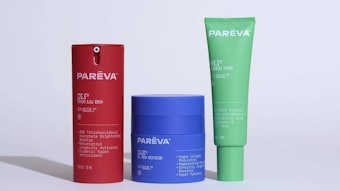
Cosmetic Executive Women’s recent Global Trend Report event in New York provided a look at the trends that are reshaping the beauty industry, with expert insights provided by NPD, Mintel and Nielsen. Read the full series here: 4 Ways Industry Paradigms Are Breaking Down, The Makeup Money Machine, Beauty Gets Well, Fragrance – Good News/Bad News and What’s Working in Skin Care & Hair Care.
Beauty shopping has dispersed across a growing array of channels, said Karen Grant, SVP, global beauty industry analyst, NPD. She noted that the fastest growing channel in the overall market and the prestige space was beauty supply, followed by the internet.
Other fast-growing channels in the general market included drug and specialty, while warehouse was a strong grower in the prestige space. Meanwhile, Jordan Rost, VP, consumer insights, Nielsen, noted that 1/3 of U.S. consumers purchase products via a subscription, with top-10 options including men’s shaving.
Retail outlets—digital and physical—have proliferated, as have the number of products launched across categories. This growing array of options puts significant power in consumers’ hands, said Rost. However, he cautioned, this increase in options has not led to growth, especially for the industry’s biggest brands.
The brands that leverage digital research tools and make products readily purchasable on discovery platforms will win the path to purchase.
Grant presented data at CEW that showed a greater portion of prestige beauty sales migrating online, led by skin care, followed by makeup and fragrance. In December alone, online prestige sales rose by $100 million, totaling nearly $500 million.
In fact, 80% of total sales gains for prestige beauty could be attributed to the online channel. A big winner was Amazon, which captured more than 50% of beauty buyers age 18-34.
As a result, it’s critical for brands to leverage digital research tools, particularly social media platforms, to ensure they are front-of-mind in the path to purchase. Though shopability on these platforms is far from seamless, Rost characterized the digital space a “brand playground” in which consumers are far more brand-loyal, compared to the brick and mortar channel.
The brands that leverage digital research tools and make products readily purchasable on discovery platforms will win the path to purchase. This will become increasingly important as in-home AI tools such as Amazon Echo proliferate. Assuming that technology will own choice, what will it mean for brands?










